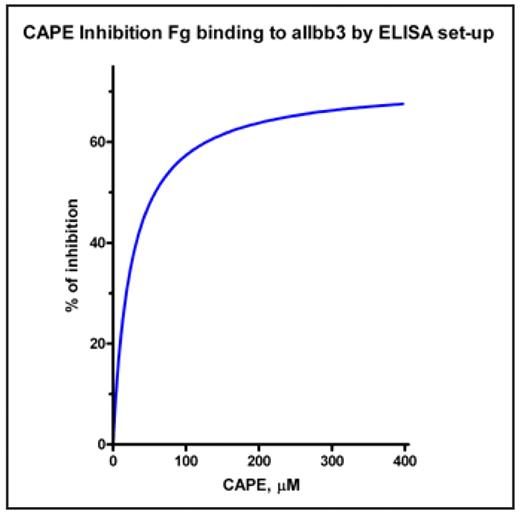Abstract
Background: Propolis is a resinous substance collected by honeybees from various plant sources. Honeybees collect resin from cracks in the bark of trees and leaf buds, masticate it and the partially digested material is mixed with beeswax. The precise composition of propolis varies with the source. There is a long history of the use of propolis, at least to 300BC and its use continues till today. Propolis has a reputation to have a large number of healthy properties among others anti-thrombotic properties. Over 180 different compounds have been identified in propolis, among others caffeic acid phenyl esters (CAPE). We have investigated the effects of CAPE on platelet aggregation.
Results: Platelet aggregation was induced with ADP, collagen or the thrombin analogue TRAP. Different flavoid components present in propolis (CAPE, galangin, acacetin, pinostrobin) were able to inhibit platelet aggregation, CAPE was the most potent one, especially for the collagen induced platelet aggregation. We examined the effect of 100 mM CAPE on the expression of a number of platelet membrane activation markers after addition of collagen and we observed that CAPE inhibited fibrinogen binding and the binding of LIBS antibody against aIIbb3 for 93% and 82%, respectively, while the expression of P-selectin was only inhibited for 37%. To explain this discrepancy, we studied the binding of CAPE to purified aIIbb3 with a Biacore. CAPE binds to aIIbb3 with an affinity constant of about 400 μM. In an ELISA set-up CAPE was able to inhibit the binding of fibrinogen to purified aIIbb3 (figure).
Conclusion: Propolis contains components such as CAPE that inhibit platelet aggregation via competition with fibrinogen for the binding to aIIbb3.
Disclosures: No relevant conflicts of interest to declare.
Author notes
Corresponding author


This feature is available to Subscribers Only
Sign In or Create an Account Close Modal